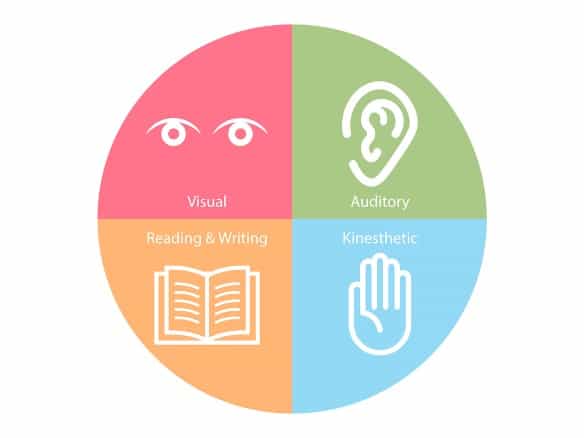Every student has a study method that helps them recall knowledge more effectively. Some take notes, some draw diagrams, others prefer to listen to lectures, and so on. A lot of modern educational psychology textbooks also embrace the learning-styles notion. For instance, ‘Some cognitive styles and dispositions do seem to influence how and what students learn’, Omrod wrote [1]. Some children appear to learn better when knowledge is delivered in words, while others appear to learn better when information is presented in pictures.

Visual learning style
Visual learners like to absorb information via the use of maps, graphs, charts, and other visual aids. They, on the other hand, do not always respond well to images or videos, preferring to get information through diverse visual aids such as patterns and shapes [2]. The greatest technique to deliver visual learners is to clearly demonstrate the link between various topics. For example, when illustrating a scientific process, a flow chart might be used.
Auditory learning style
Auditory learners are those who learn better when knowledge is presented to them in an auditory style, such as when it is heard or spoken. They are more likely to arrange their ideas after they have spoken then to consider them through first. Because stating things out loud helps them comprehend the concept. Auditory learners learn best when material is delivered in a conversational fashion, such as lectures or group discussions. They can benefit from listening to the classes again, having recordings of the lectures, and participating in group activities that challenge peers to explain ideas, among other things [3].
Kinesthetic learning style
Individuals who prefer to learn by doing are known as kinesthetic learners. They enjoy a hands-on experience. They are more in touch with reality and more connected to it, which is why they need tactitel experience to better grasp anything [4]. Personal experience, practice, or simulations are the greatest ways to communicate new knowledge to a kinesthetic learners. They can, for example, recall an experiment by recreating it.
Reading & Writing learning style
Reading and writing learners absorb knowledge best when it is presented in written form. Text, they believe, has more impact than any visual or audio expression of a concept. These people are frequently excellent at writing projects. There are a variety of methods for engaging and understanding a reading/writing learner. For example, having them summarize charts and diagrams with written remarks, taking written tests on the topics, or giving them written assignments would be preferable.
Learning enviroments for all
It is important to create a healthy indoor learning environment for all types of learners. For creating places to display kids' work and success having a flexible homeschooling schedule dedicating time for science education and creative experiments makes it possible to have a great indoor learning environment that supports children's learning and development [5].
Whether students are visual, auditory or kinesthetic learners, virtual reality can help to make the learning process more interactive and thus more engaging. These are just some of the methods virtual reality can be used in education. VRLab Academy brings together the visual learning style, auditory learning style and also the kinesthetic learning style; offers students many different styles and develops a more interactive scientific education.
Take a look at all experiments at VRLab Academy and enhance your teaching power with us.
References
[1]. H. Pashler & D. Rohrer, ‘Learning Styles: Concepts and Evidence’, 2009.
[2] https://bau.edu/blog/types-of-learning-styles/
[3]. The Hay Group, ‘One style doesn't fit all: The different ways people learn and why it matters’, 2009
[4] D. Kolb, ‘Learning style inventory’, 1985.
[5] https://www.inspectionsupport.com/resources/indoor-learning-environment/